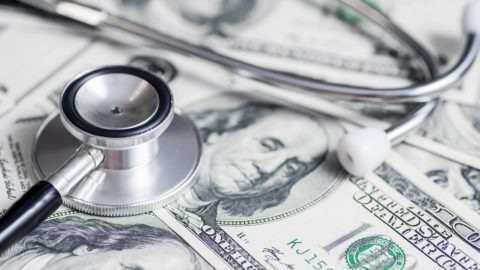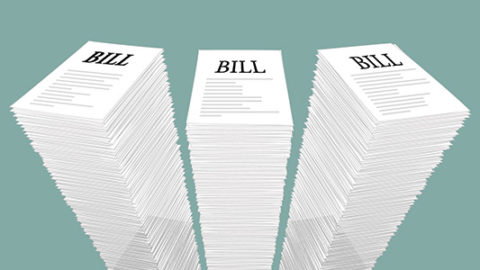Hospital Posturing on Finances Obscures Grave Crisis of Health Care Affordability

TOPLINES
As the Continuing Resolution expires and Congress is under increasing pressure to fund the government and reauthorize expiring programs, the American hospital industry continues to paint a lurid picture of U.S. hospitals’ financial health, warning patient access could be compromised without immediate legislative intervention. To hear the American Hospital Association (AHA) tell it, the “vast majority” of America’s hospitals are in serious financial jeopardy due to workforce shortages, rising labor costs, broken supply chains and rapid inflation.
It’s true many smaller hospitals serving rural and disadvantaged populations are suffering post-pandemic financial hardship, and targeted policy solutions are essential to ensure their sustainability. But for the country’s larger health systems, the situation is hardly as bleak as advertised. The industry’s tale of financial woe is fundamentally misleading and omits critical details about hospital funding and performance. It also distracts from the very real and increasingly grave crisis surrounding health care affordability being experienced by the nation’s employers and their employees and families.
Subsidies Help Fuel Industry Consolidation
It’s worth remembering that the hospital industry has already received more than $170 billion in COVID-19-related government-authorized assistance. These subsidies helped preserve near-normal profit margins through the worst of the pandemic, despite sharp declines in operational results. Hospitals also benefited from an estimated $100 billion in low-interest loans and enjoyed a 20% boost in Medicare reimbursements for inpatient COVID-19 admissions.
What the industry doesn’t mention in its pleas for additional funds is that the earlier, no-strings-attached COVID subsidies were used by many of the country’s most well-heeled health systems to support acquisitions of weakened competitors and physician practices, not to address pandemic-related operational issues. These deals marked a continuation of a pre-COVID-19 trend that saw larger systems snap up smaller players in pursuit of expanded market share, reduced competition and higher prices and profits.
The flurry of consolidation and integration continues unabated. Merger and acquisition activity in the industry – a marker of the largest health systems’ overall financial health – hit record-high levels in the second quarter of 2022, with 13 transactions generating $19.2 billion.
Another important piece of evidence that reflects hospitals’ true economic condition is the disconnect between what the industry is telling policymakers on one hand and what for-profit systems are telling investors on the other. Tenet Health, for example, bragged in a Q2 2022 earnings call that margins or earnings before interest, taxes, depreciation and amortization (EBITDA) for its United Surgical Partners International subsidiary were a remarkable 41%, while surgical cases had reached 100% of pre-pandemic levels.
Surgery Partners, a publicly held ambulatory surgery company, saw net revenue increase by 11% to $1.6 billion through the worst of the pandemic, from 2019 to 2021, and predicts the ongoing migration of surgical procedures from inpatient to outpatient settings will continue to fuel rapid growth going forward.
Bailouts for Negative Market Returns?
Despite these bullish indicators, industry representatives declared last fall that two-thirds of hospitals could be operating at a financial loss in 2022 due to post-pandemic pressures. Tellingly, however, a key component of hospitals’ losses was not discussed.
A recent study of quarterly financial statements from 10 of the nation’s largest non-profit hospital systems provides a more complete accounting. The analysis confirmed that, on average, the 10 non-profits experienced a reversal in profit margins from 9% in 2021 to minus-6% in 2022.
Yet a closer look at the numbers showed the vast majority of the red ink stemmed not from operations (the systems’ patient care revenue actually increased by 1%) but from declines in investment income. All told, the 10 systems experienced an 185% drop in investment income, accounting for 85% of total losses.
Should the American taxpayer bailout hospitals for making bad bets in the stock market? Petitioning taxpayers to help recoup poor investment outcomes is a brazen and unacceptable attempt to evade responsibility for flawed business decisions. It’s also a testament to hospital hubris, given that it’s an appeal few, if any, other industries or businesses would contemplate.
Stingy Charity Care
Even with their investment reverses, America’s non-profits – which represent about 58% of all hospitals — continue to reap tax avoidance subsidies collectively worth about $60 billion annually. In return, they’re obligated to provide community benefits, which typically take the form of charity care, or free or discounted care for poor patients who couldn’t otherwise afford it.
It’s true some non-profit hospitals provide community benefits that are equal to, or in excess of, the tax breaks they receive. Nonetheless, increasingly restrictive financial aid policies imposed by larger systems have helped drive the overall value of the U.S. charity care to miniscule levels.
A 2022 analysis by the Wall Street Journal found that U.S. non-profits spent, on average, just 2.3 cents of every dollar of patient revenue on charity care in 2021, with many providing less than 1%. Surprisingly, the average amount spent by non-profits was less than the 3.4% provided by their for-profit competitors.
Non-profit Henry Ford Health in Detroit is currently undertaking a $2 billion facility renovation, its largest ever, with the hope of becoming a recognized destination for patients traveling for care. Yet the company’s spending on community benefit locally declined from 1.9% in 2010 to just 0.73% in 2019.
Several state legislatures are pursuing laws that would establish new hospital community benefit reporting and spending requirements at the state level. Don’t hold your breath that the Internal Revenue Service will take non-profit providers to task. A lack of enforcement resources and broad flexibility in how hospitals are allowed to apply their community benefits suggests few, if any federal repercussions for the paltry level of charity care.
Oceans of Waste
One final area of hospital economics that the industry is unlikely to share with policymakers or the public is the extent of waste across the health care system. A landmark study in 2019 estimated that between 20-25% of all health care spending is wasteful, with administrative costs representing the largest piece at about 35% of the total. Other contributors include fraud and abuse, failure of care coordination, overtreatment or low-value care and pricing failure.
Instead of continually relying on higher prices and more government funds to shore up their finances, hospitals should focus on increasing efficiencies, lowering costs and eliminating waste. This is, after all, what virtually every other business is compelled to do.
Employer Sponsored Health Coverage in Jeopardy
For hard-pressed employers, workers and their families, it’s painfully clear that the real emergency in health care has little to do with hospitals losing money. It’s about patients being stretched to the breaking point by rising health care costs and about the increasingly uncertain future of employer-based health benefits.
U.S. health care now devours $4.3 trillion a year, or $12,900 for every man, woman and child in the country. Hospital prices alone have soared 600% since 1990 and hospital services now represent the largest share of total health care costs at about 37% of the total for privately insured Americans. For many Americans, the costs have become prohibitive: Nearly half of Americans say they’ve avoided getting health care services because of cost worries and nearly two-thirds of personal bankruptcies have been linked to medical expenses.
Just as alarming, nearly 90% of executives at 300 of the country’s largest employers have warned the cost of providing health benefits will be unsustainable within five-to-10 years. Given that nearly half of all Americans rely on employer-based health coverage, it goes without saying that the loss or severe diminution of these benefits would be catastrophic.
Preserving an Affordable System of Care
The harsh truth is that the unbridled pursuit of profit has come to dominate most aspects of American health care, and employers and patients are paying the price. To ease the crisis, it’s imperative that policymakers take a number of critical steps, including enforcing full price transparency to foster real competition among hospitals and other providers, strengthening anti-trust enforcement and oversight of mergers and acquisitions, developing more effective performance measures to assess what outcomes the system is actually producing and implementing payment reforms that will incentivize changed provider behavior.
These are just some of the actions that will be necessary to ensure and sustain affordable, equitable and high-quality health care system. What is most assuredly not needed, and what will only serve to exacerbate the crisis, is to continue funneling enormous amounts of money into America’s dissembling and dysfunctional hospital industry.



